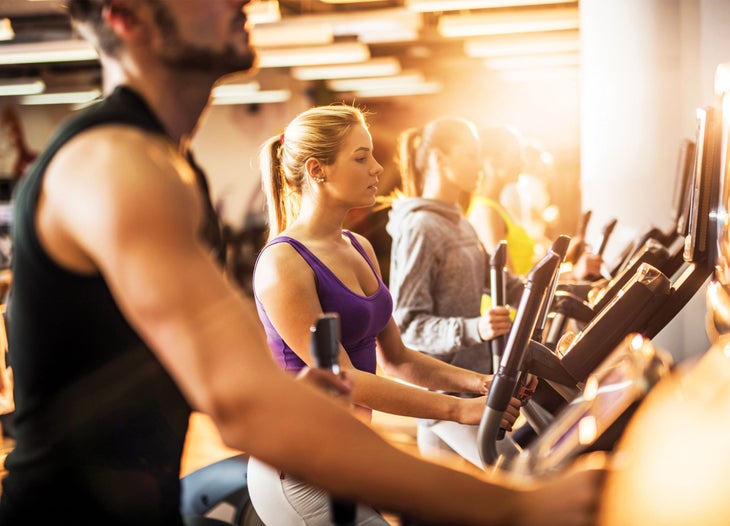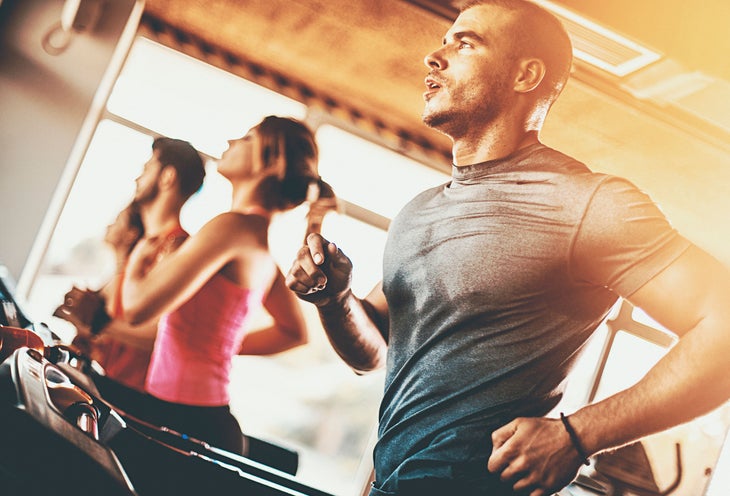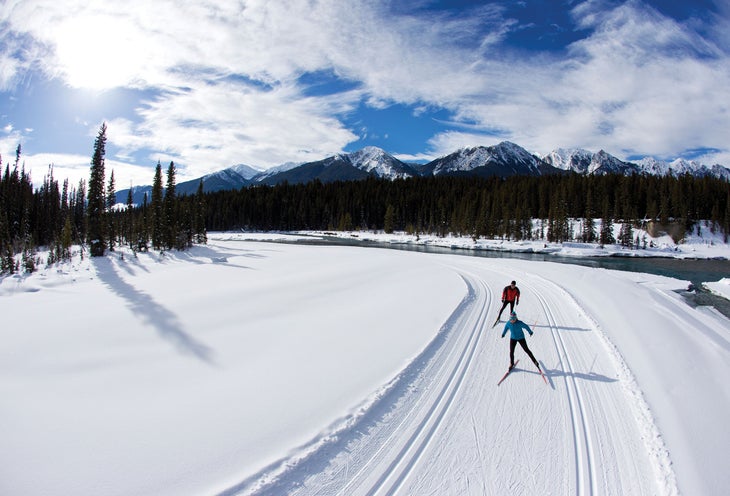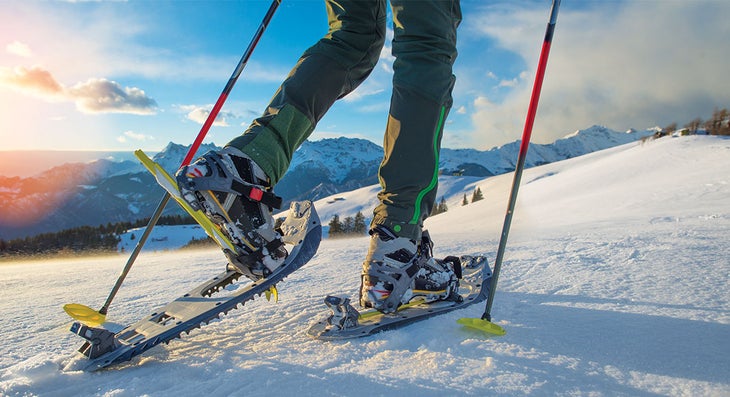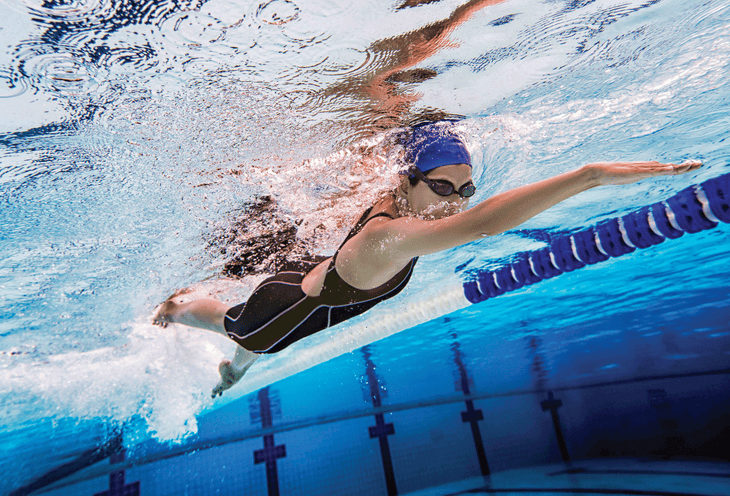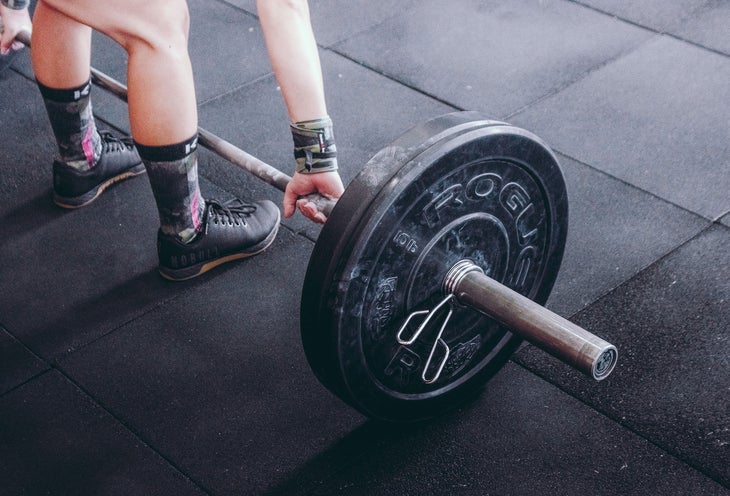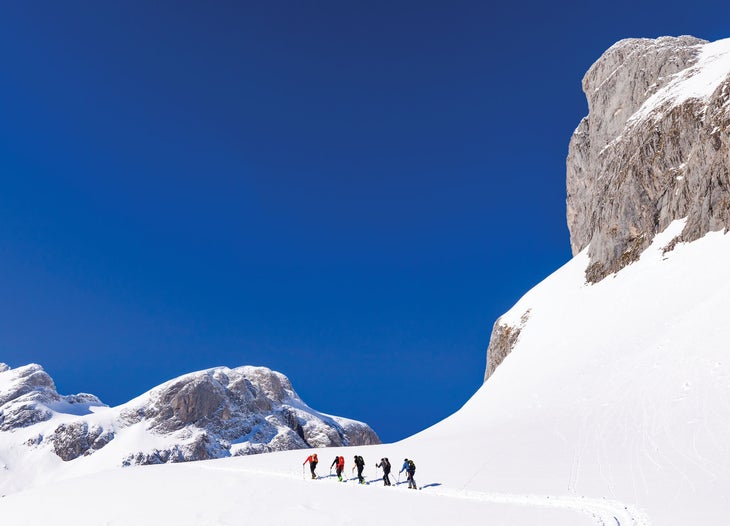New perk! Get after it with local recommendations just for you. Discover nearby events, routes out your door, and hidden gems when you
sign up for the Local Running Drop.
Everybody needs an offseason. It’s a time to back off the volume and intensity from running, and retool, rebuild and refresh yourself before getting headlong into your next high-mileage training cycle or race-specific buildup. It doesn’t mean you have to stop running entirely—and nor should you—but it’s a good time to engage in other activities that will build strength, use slightly different muscle groups and give you a mental and physical break from the specificity of running.
We caught up with trail-running coaches Mario Fraioli and Ian Torrence, who are both big proponents of offseason cross training as a means to recover and retool after a hard season of training and racing. Both coaches stress participating in activities that mimic or complement the motion of running as best as possible, but only after considering an individual runner’s athletic skill set, injury history and personal preferences.
“I’m an advocate of a couple of months of no racing at all with lower volume of mileage and lower intensity,” Torrence says. “You don’t want to wind up burnt out or injured, and taking a break can help strengthen, repair and recover. Cross-training is important, but do things that complement your running.”
Elliptical TrainingAn elliptical machine at the gym offers a low-impact, total-body workout that can be boosted by increasing resistance and incline. The exercise motion isn’t precisely similar to running, but, Torrence says, it is similar enough to build running-specific arm, hip, core and leg muscles and also increase aerobic fitness.
An elliptical machine at your local health club or rec center or an ElliptiGo bike. (Fraioli prefers an ElliptiGo bike, if possible, which he believes does a better job of mimicking a running-specific motion from the waist down.)
After a 10- to 15-minute easy warm-up, do an interval session by alternating going 1 to 2 minutes hard and 1 to 2 minutes easy for 20 minutes. Or you can create your own organic fartlek workout by varying effort, resistance, incline and duration of intervals with those variables. Although the motion is continually the same and, like a treadmill can be monotonous for that reason, the workout possibilities are virtually unlimited and can offer a spike in cardio workout value.
As with a treadmill, you can hop on the machine (or ElliptiGo bike) and go for 30 to 45 minutes for general aerobic maintenance to simulate an easy 30- to 45-minute recovery run. That’s also an ideal warm-up session if you’re at the gym and plan to combine it with a weight session. But if you’re going to get on an elliptical machine, you might as well amp things up a bit and modify your workout by adding resistance and intensity.
“I wouldn’t suggest just getting on the machine and spinning easy for 30 minutes as the best workout,” says Torrence. “Mixing it up a bit will up the cardio value and the fun factor, and it will help pass the time, too.”
Cyclocross and Gravel Biking
Cyclocross has been a popular offseason activity of road cyclists, mountain bikers and triathletes for years. Trail runners can benefit from it too, Fraioli says. In fact, many consider it the trail running of the cycling world, partially because it includes so many obscure, always-changing aspects: pedaling a mostly upright bike on dirt trails and rocky roads, dismounting and running through sand or mud, carrying your bike up steeps steps and doing it all with frequent heart-rate spikes. The timing is perfect, given that the cyclocross season generally happens in the fall and winter in the U.S.
Although you can technically do a cyclocross race on a mountain bike, for the best experience it’s best to do it on a cross bike or gravel bike with skinny tires, clipless pedals and disc brakes. Be sure to wear a helmet and full-fingered gloves and have some experience clipping out of your pedals.
For cyclocross bikes, check out Specialized CruX Elite 1X ($3,200), Mongoose Seleous Comp ($1,100) and the Salsa Journeyman ($899). For gravel bikes, check out the Jamis Renegade Elite ($3,800), Trek Checkpoint SL5 ($2,800) and Specialized Diverge 1 ($699).
After warming up for 15 minutes, go hard for 5 or 10 minutes at a time, hop off your bike and run with it over your shoulder for 100 meters. Get back on and ride hard on a rutted dirt road. If there is a fallen tree, ride hard to it and carry your bike over it. Get back on and ride hard for 5 to 10 minutes. Find a short steep hill and run up and ride down it a couple of times. Ride along the rough gravel of a railroad track.
Hike your bike up the steps in a public park. Ride up a steep grassy hill. Just have fun, get your heart rate going and do anything that would seem contrary to being an easy mountain-bike ride through the woods.
The best way to experience cyclocross is to throw yourself into a race. Remember how your first 10K trail race was nothing you’d ever experienced before? The same goes for cyclocross. No matter if you’re a skilled cyclist or a complete novice, you’re bound to endure a lot of discomfort, plenty of challenges and a lot of fun during your first race. (Races typically take 30 to 60 minutes.)
Any treadmill will do, whether it’s the one in your basement or the local health club or community rec center. If you’re planning on buying one, entry-level treadmills (roughly $2,000 and below) can offer just enough functionality to get you moving, while more advanced models offer more features, a sturdier feel and a smoother ride. Alter-G treadmills can be hard to find, but some health clubs, rehab centers and universities offer limited access, starting at about $25 per hour.
Always start with a slow-paced warm-up of 10 to 15 minutes. For a steady-state tempo workout, run for 20 to 25 minutes at a moderately fast pace, while a basic fartlek run alternates between faster and slower paces for three minutes at a time.
If you want more specificity, consider doing 8 to 10 reps x 1-minute hard (5K to 10K effort) with 60- to 90-second jog recoveries between.
You can also run with resistance by adjusting the incline of the treadmill and running 8 x 45-second hill surges at a 6- to 8- percent grade with a 90-second jog recovery in between (either at the inclined position or back at the flat position).
While it’s OK to jump on the treadmill from time to time for an easy 5-miler, Fraioli says, don’t spend all of your treadmill sessions just jogging slowly. Throwing in zestier sessions once or twice a week will improve your fitness and keep you from getting bored.
How hard is hard? The more efficient ski form you have, the faster you can go, but err on the side of going sustainably hard for the entire set. The key, just as with running workouts, is trying to keep your efforts consistent on each of the reps.
Nordic Skiing
Cross-country skiing—no matter if it’s skate skiing or classic skiing—offers the opportunity for vigorous all-body exercise and a huge aerobic workout with very little impact. Studies have shown that one hour of moderate cross-country skiing can burn approximately 470 calories for a 130-pound woman and nearly 700 calories for a 190-pound man.
Skate skis or classic skis, boots and bindings, plus lightweight winter apparel. (Dress as if you’re going for a winter run in the same climate: tights, lightweight gloves and hat, moisture-wicking base layer, long-sleeve shirt and/or lightweight/breathable shell jacket.) Expect to pay about $500 to $700 for an entire basic setup of new gear, but keep in mind daily rental packages range from $50 to $100 at most cross-country ski areas.
Given the smooth surfaces of the groomed Nordic ski tracks, it’s pretty easy to replicate some classic running workouts on skis, Fraioli says. For example, after you’ve warmed up, consider doing a 6 x 800m or 5 x 1-mile effort with 3 or 4 minutes of rest in between. (If the course isn’t marked, simply modify the workout so you’re skiing 6 x 4 minutes hard or 5 x 6 minutes hard with 3 minutes rest.)
How hard is hard? The more efficient ski form you have, the faster you can go, but err on the side of going sustainably hard for the entire set. The key, just as with running workouts, is trying to keep your efforts consistent on each of the reps.
Classic skiing (known as kick-and-glide skiing) is generally easier to pick up for newcomers, but skate skiing (the act of pushing off from side to side like ice skating) also has a fairly short learning curve.
Both work a lot of muscles groups that running uses (quads, hamstrings, glutes, hip flexors, etc.) as well as some you might not be used to using with such intensity (triceps, shoulders, calves, etc.). Given the nature of the effort required, you can head to a Nordic skiing center in New England, the Upper Midwest or the West, and ski consistently for 45 to 90 minutes and get plenty of cardio and muscular development, even without doing a specific workout.
Snowshoe Racing and Running
Running over snowy trails on snowshoes is roughly a mix between running and hiking. While a low-impact activity, it still requires a lot of effort and produces a high-end aerobic workout. It also allows those who live in snowy climates to stay off the treadmill and race outside in winter months, and offers up a new perspective on trails and routes usually run in dry months.
Compared to hiking and backcountry snowshoes, running snowshoes are slender and svelte, typically in the 7- x 20-inch to 8- x 22-inch range and weigh about 16 to 20 ounces per shoe. Two top models on the racing circuit are the Atlas Snow Race Snowshoes ($340) and Dion Snowshoes Model 120 Laser with Quick Fit Bindings ($270). Wear road-running shoes (which slip into snowshoe bindings better than most trail-running shoes) and dress as if you’re going out for a winter run (including tights, gloves, light hat, etc.) knowing that you’ll quickly generate heat.
Just go running! If you live in a winter climate, you can probably run on some of your favorite trails and get a solid aerobic workout just as you would by running. If you want to add some spice, find a mild to moderate slope and do an 8 x 100-yard hill workout by running hard uphill with an easy jog back to the start.
If you can run on trails, you can run on snowshoes. While running through deep powder snow is fun, it’s also hard work. You don’t need to break trail in fresh snow for a good workout, and doing so for any length of time will torch your hip flexors (and your energy in general).
Seek out fire roads that snowmobiles or other winter vehicles may have packed down for an enjoyable running surface. Snowshoe races are typically 5K and 10K events with a mix of packed-down snow and untracked sections. The experience is similar to trail running on rolling trails with semi-rigorous uphills that will spike your heart rate and fun, flowing downhills that offer moments to recover.
Swimming
Swimming offers a full-body workout that can boost your aerobic engine and build general strength. Fraioli and Torrence agree that there isn’t a direct correlation between swimming and the specificity of running, given that swimming happens in a prone position. However, swimming is a very low-impact activity that provides complementary muscle groups a boost and can still be a means to start regenerating your aerobic fitness.
“I think it’s most beneficial in a low-key recovery scenario,” Fraioli says. “For someone who is mostly running, even on trails, being able to get into a pool can be very therapeutic and increase your range of motion and unwind some of the damage that high-mileage running can do.”
But, warns Torrence, if you’re new to swimming or not very efficient in the pool, you might consider a different cross-training activity because you might wind up working too hard to gain basic functionality.
A swimsuit and goggles are the basics, but hand paddles and pull buoys are ideal for next-level training.
One of the basic interval workouts is some variation of 100-yard repeats. After a 10- to 15-minute warm-up, swim 100s (four lengths of the pool) in an up-tempo pace that is faster than your typical lap-swimming pace. Take 15 to 30 seconds between each 100 and do a set of 4 to 8, depending on your fitness and time.
Another good workout is a series of 4 to 6 75-yard repeats (three lengths of the pool) in which you swim consecutive slow, medium and fast laps followed by a 15-second break. Finish each interval session with a cool down of 12 to 24 lengths of slow, easy swimming.
For your first few sessions, start by swimming slow freestyle laps to get your body used to the unique muscular movements. Swim for a specific duration (30 or 45 minutes) or a specific number of lengths (a mile is about 70 lengths in a 25-yard pool). But beware that swimming can be a monotonous bore just like slow jogging on a treadmill. Add a variety of intervals to your sessions to build strength and up your cardio fitness.
Free Weights and Core Work
While trail running can build up the smaller muscles of your feet, ankles, hips and lower back, generally speaking, running breaks down your strength and takes a toll on the big muscles that control your running form. Torrence suggests doing a regular core-work program—he uses a TRX system and a stability ball to do a range of core exercises—but suggests his athletes also engage in a traditional Olympic weight-lifting session twice a week. Getting stronger helps prevent injuries, increases power, improves neuromuscular coordination and increases running economy by balancing and stabilizing a runner’s stride.
“I’m a big advocate of runners doing heavy lifting with heavy weight,” Torrence says. “I don’t think runners have to worry about gaining bulk, especially if it’s a complementary exercise. The key is doing running-specific exercises.”
Traditional free weights, including Olympic-style weights and dumbbells and/or kettlebells.
For Romanian deadlifts and goblet squats, use moderate weights and shoot for 3 or 4 sets of 10 reps and progress from there. With Romanian dead lifts, use an unweighted or moderately weighted barbell and start from the ground or from the barbell racked at a height that’s slightly above your knees. Pick up the bar and bring it to a neutral position just below your waist with extended arms, a straight back and slightly bent knees. From there, lower the bar down the front of your legs, keeping a straight back and chest and engaging your glutes as your rear moves backward and the bar descends. Slow the motion to a halt as you feel an acute stretch in your hamstrings and the bar dips below your knees. Keeping your back tight and straight and knees slightly bent, drive your hips forward while pulling the bar straight up.
For goblet squats, pick out a moderately heavy kettlebell or dumbbell that can be held with both hands in an elevated position near the sternum. Stand with your feet shoulder width apart. Keeping your back straight, engage your abs, obliques, quads and glutes as you bend your knees to lower to a squatting position in which your elbows touch your knees. Return upward by driving your heels into the ground and thrusting with your glutes, hamstrings and quads.
For core strength, focus on planks, scorpions, clam shells, back extensions and pedestal-extension movements.
When it comes to weights, Torrence suggests focusing on two key exercises—Romanian deadlifts, which develop hamstrings, glutes and lower-back muscles, and goblet squats, which primarily strengthen quads and glutes while being easier on the back than traditional barbell squats.
Alpine Touring & Ski-Mo RacingDonning skis with climbing skins and skiing uphill, then “ripping” the skins off, shoving them in a pack and skiing downhill has been a popular sport in Europe for decades. While exploring snowy terrain with traditional backcountry skis and skins is called “alpine touring” (AT) or randonnée skiing, the fast-and-light sport of “ski-mo” (short for ski mountaineering) has become a small but growing competitive-racing trend among trail runners who live in cold, mountainous regions, both as a form of cross training and as a way to exert competitive fire during the winter.
In either case, the uphill motion of free-heel uphill skiing is similar to power hiking during the steep section of a trail race. Your skis stay on the ground as you pick up your knee and lift your leg in a forward direction similar to a hiking stride. Both AT and ski-mo racing allow for massive vertical gain and great cardiovascular fitness without the detrimental impact of running.
“There’s no pounding involved,” Fraioli says. “You can actually train more hours on skis with less impact on your body.”
Ski-mo gear differs from traditional AT gear in that it’s much lighter, more minimal and built for speed. And ski-mo races are just that—races, where athletes ski uphill, transition their gear, ski downhill (and sometimes up and down multiple times) as fast as possible.
The LaSportiva Raceborg ($1,800) is a top-of-the-line ski-mo boot that tips the scale at just 1.7 pounds that pairs well with the Gara Aero LS race skis ($999). For alpine touring, Scarpa’s Maestrale boot ($695) weighs in at about 3 pounds while the Meier Heritage Tour ($895) is a classic ski.
Find a good slope for uphill skiing (either in the backcountry or at a resort) and spend a few hours yo-yo-ing up and down. Depending on the conditions and weather, you might only complete one long loop or you might get a chance to rack up more.
If you’re in it for the workout, shorten the climbing portion considerably and do a modified 8 x 100 hill workout with super-fast ascents coupled with easy downhill sections.
“If you live in an environment where you can ski on a regular basis and get a lot of climbing in, you can get really, really fit without running,” Fraioli says.
“You can maintain or even improve your fitness over the winter without pounding on your body, so you can get to spring feeling physically and psychologically refreshed. Aside from the physiological benefits, you’re kind of suffering when you’re going uphill the same way you are in a race. That’s a good way to callous your mind as you start to prepare for your next big race, even if it’s months away.”
